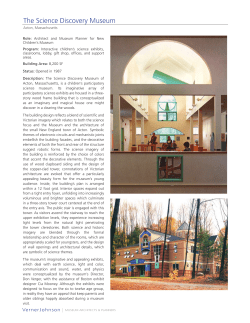
Sulfuric Acid Manufacturing Introduction/Background Application Data Sheet Chemical
Application Data Sheet Chemical Sulfuric Acid Manufacturing Introduction/Background Sulfuric acid (H2SO) is a strong, heavy acid with a density of 1.84 g/cc and a marked tendency to absorb moisture from the air, generating much heat. Concentrated sulfuric acid (93–98 %) is used in the manufacture of fertilizers, explosives, dyes, and petroleum products. Sulfuric acid is formed during the Contact Process. The Contact Process forms sulfur trioxide (SO3) gas from sulfur dioxide (SO2) and oxygen in a catalyst tower, and sulfuric acid is formed when water is added. A mixture of H2SO4 and free SO3 is equivalent to a sulfuric acid concentration of over 100 %. This mixture is called fuming sulfuric acid or oleum. Sulfuric Acid Plant Electrical conductivity is the most cost-effective technique for both monitoring process conditions and safeguarding process equipment (a typical plant schematic is shown in Figure 1) Elemental sulfur (or other sulfur-containing ore) is first burned in air to form hot sulfur dioxide gas. The hot gas is cooled to about 400 °C (752 °F) in a waste heat boiler and then, in a catalyst tower, passed through two to four stages of platinum or vanadium catalyst to form SO3 gas. The catalytic reaction generates a lot of heat and is reversible. The catalyst tower is therefore, arranged with alternating levels of catalyst and gas coolers to prevent the reverse reaction from occurring at high temperatures. The product SO3 gas is further cooled to about 250 °C (482 °F) in a cooler and then absorbed by a recirculating stream of oleum. The recirculation/storage (recycle) ratio is determined by the desired specification of the oleum. Generally, a conductivity measurement is placed within the oleum tower recirculation line. Unabsorbed SO3, gas escaping form the oleum tower is absorbed by a recirculating stream of 98–99 % sulfuric acid. The recycle ratio of the sulfuric acid is, once again, determined by the desired purity of the sulfuric acid product. Environmental regulations frequently require that waste gas from the sulfuric acid tower pass through another absorbing tower to eliminate SOx emissions that cause acid rain. A second conductivity measurement is placed in the final recirculation line between the last sulfuric acid tower and the circulation tank. The final sulfuric acid product is then sent to storage tanks. Both the storage tanks and process piping in the sulfuric acid plant can be of stainless steel, providing the sulfuric acid concentration never drops below 95 %. Less concentrated acid is very aggressive and requires exotic construction materials, such as Hastelloy or Teflon (1) lining, for adequate service life. (1) Teflon is a registered trademark of E.I. du Pont de Nemours and Co. Instrumentation Sulfuric acid is very corrosive, so the percent concentration determination requires a sensor with high chemical resistance and analyzers that are pre-programmed with a conductivity-to-percentconcentration conversion equation. Emerson Process Management offers both insertion and flow-through sensor installation options and several analyzers with the equation required for the 96–100 % range. Measurements above 100 % sulfuric acid are usually based on conductivity values only. The popular and versatile 228 insertion/submersion sensor should be ordered in the chemically resistant Tefzel (option - 04) material for this application. A convenient alternative is the modular flowthrough 242 toroidal conductivity sensor with non-wetted ANSI & DIN flange installation, optional Hastelloy C-276 contact rings, and a teflon or alumina liner for abrasion resistance. Emerson Process Management's toroidal analyzers include a preprogrammed standard curve for 96–100 % sulfuric acid. They also have the ability to generate percent concentration equations based on user data for applications such as oleum. The data and equations are stored in an EEPROM that can be easily edited. Automatic temperature compensation is based on the temperature signal received from the sensor. Compatible toroidal conductivity analyzers include the 5081T and 1066T DC-powered HART® and FOUNDATION® Fieldbus transmitters, the 1056 analyzer, and the 56 Analyzer. Consult the appropriate Product Data Sheet for complete details. Chemical Instrumentation 56 Toroidal Conductivity Analyzer High resolution user help screens and on- screen data trend graphs Data logger and Event Logger - Download process data and alarm conditions via USB 2.0 data port Digital Communications - HART® and Profibus® DP communications with full features and functionality Measurements - pH, ORP, Conductivity, Total Chlorine, Chlorine, Oxygen, Ozone, Turbidity, Pulse Flow, Temperature, and others via 4–20 mA input from any device Dual sensor capability 1066T and 5081T Transmitters Pre-programmed 96–100 % sulfuric acid curve Automatic/Manual temperature compen sation ensures accurate monitoring and control Hand-held Infrared Remote Control (IRC) or local keypad HART® and FOUNDATION® Fieldbus compatible Approved for Hazardous Areas 228 Toroidal Conductivity Sensor Available in chemically-resistant Tefzel Includes integral temperature compensator Convenient installation for cleaning and preventative maintenance 242 Flow-Through Toroidal Conductivity Sensor Small, compact design available in many materials and sized for maximum flexibility Integral Pt100 for accurate temperature compensation Flow-through design ideal for viscous and abrasive solutions Figure 1 - Sulfuric Acid Manufacturing Air Sulfur Burner Secondary Absorber SO2 Cooler Sulfur Oleum Tower H2SO4 Tower 242 SO3 56 Analyzer Cooler Catalyst Tower 98 % H2SO4 Circulation Tank 242 Oleum Circulation Tank 98 % H2SO4 Storage Tank 56 Analyzer www.RosemountAnalytical.com www.analyticexpert.com www.twitter.com/RAIhome www.facebook.com/EmersonRosemountAnalytical ©2013 Emerson Process Management. All rights reserved. Emerson Process Management Rosemount Analytical Inc. 2400 Barranca Parkway Irvine, CA 92606 USA T (949) 757 8500 F (949) 474 7250 liquid.csc@emerson.com 43-LIQ-ADS-2800-22 The Emerson logo is a trademark and service mark of Emerson Electric Co. Rosemount Analytical is a mark of one of the Emerson Process Management family of companies. All other marks are the property of their respective owners. The contents of this publication are presented for information purposes only, and while effort has been made to ensure their accuracy, they are not to be construed as warranties or guarantees, express or implied, regarding the products or services described herein or their use or applicability. All sales are governed by our terms and conditions, which are available on request. We reserve the right to modify or improve the designs or specifications of our products at any time without notice.
© Copyright 2025


















